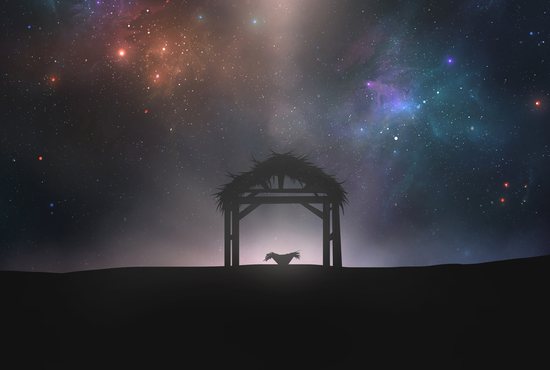
St. Luke places an extremely high value on the Eucharist, and it is a major point of emphasis woven into the fabric of his Gospel from beginning to end. He artfully inserts a curious detail into his birth account to begin to state his case: Mary “gave birth to her firstborn son … and laid him in a manger” (Lk 2:7). The manger is mentioned twice more in verses 12 and 16.
A manger is a feeding trough for animals. It is made of wood or stone, located on the ground or slightly above the ground, and contains hay or grain for cattle, horses, donkeys and other animals. It is not very sanitary, and it often is cold and damp. What mother would place her baby in a manger? She would hold her newborn child in her arms or lay it in a crib.
This detail would have jumped off the page for Luke’s first readers, and it should stand out as peculiar to us. Luke is hoping that we will be wondering, “Why is baby Jesus in a manger?”
Animals approached the manger anytime, day or night, for food. The farmer was concerned about his animals and was careful to be sure that there would be feed in the trough at all times so the animals would be well-fed, healthy and strong.
The shepherds represent people everywhere, and as the animals approached the manger for food, the shepherds approached the manger to feast their eyes upon Jesus, and the infant in the manger would be the one to feed their souls, both with his word and the Eucharist, the great banquet feast of his Body and Blood.
The manger on Christmas anticipates the table at the Last Supper, and as the owner of the animals made sure that his animals would be well-fed to provide for their physical health, the infant Jesus would feed his sheep to provide for their spiritual health.
The manger begins a feeding or banquet theme that surfaces multiple times throughout Luke’s Gospel. Only Luke mentions that Jesus’ disciples “eat and drink” (Lk 5:33), that Jesus was accused of being “a glutton and a drunkard” (Lk 7:34), and that Jesus dined three times at the home of a Pharisee (Lk 7:36; 11:37; 14:1). Luke alone has two banquet parables, the parables of the Guests at the Banquet (Lk 14:7-14) and the Great Feast (Lk14:15-24), both of which look ahead to the banquet of the Last Supper and further ahead to the eternal banquet in heaven (Lk 22:30).
Luke also reports how Levi gave a banquet for Jesus (Lk 5:29), and how Jesus miraculously fed a crowd of 5,000 (Lk 9:10-17). Beginning with the manger, it all points to the Last Supper.
The infant in the manger would be the one who would take bread and say, “This is my body” (Lk 22:19), and a cup of wine and say, “This cup is the new covenant in my blood” (Lk 22:20). And wanting to provide ongoing spiritual sustenance, he told his disciples to “Do this in memory of me” (Lk 22:19b). Then Jesus showed them how to re-enact the Eucharist when he broke bread with two of his disciples on Easter Sunday night at Emmaus (Lk 24:30).
The early Christian community took Jesus’ instruction to heart, and from the outset they devoted themselves “to the breaking of the bread” (Acts 2:42).
Most religious artists portray the infant Jesus in the manger on a bed of hay or straw, but those who grasp the Eucharist connection show him on a bed of wheat. (For example, note the wheat depicted in the stained glass window on page 1.) Luke would have us approach the manger and feast our eyes upon Jesus because the newborn child is food for our souls.
Father Van Sloun is pastor of St. Bartholomew in Wayzata. Read more of his writing at CatholicHotdish.com.



